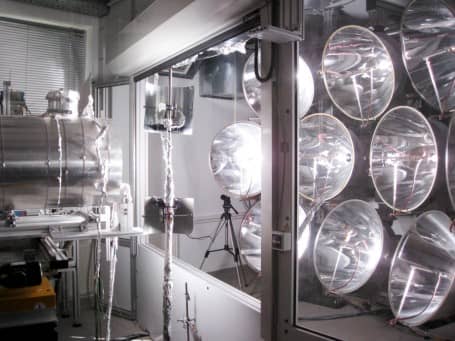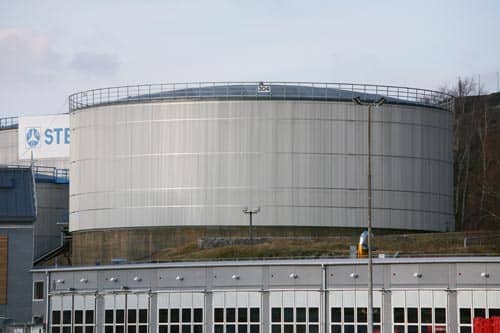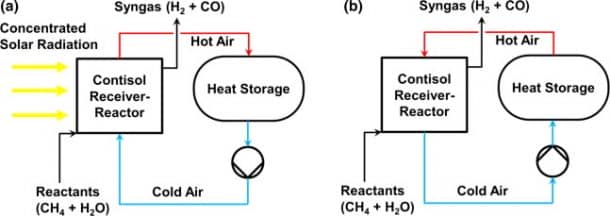International solar thermal energy researchers have tested a solar reactor that runs on air called CONTISOL. The reactor is capable to make any solar fuel like hydrogen and can run day or night. It uses concentrated solar power (CSP) which includes thermal energy storage in it. Solar fuels promise that they can have zero carbon fuels like hydrogen. But they will not emit climate-damaging carbon emissions which usually emit from natural gas.
Making a perfect solar reactor is the key to build an entirely clean future of energy. Many kinds of reactors were been tested by the scientists which were heated by the thermal form of solar, i.e CSP. CONTISOL makes use of mirrors to concentrate the solar flux on a receiver. This is necessary to replace the burning of a fossil fuel to generate the heat which is required to drive the thermal chemistry process and the chemical reactions like splitting H2 (hydrogen) from H2O.

According to experts the direct heat of CSP is more efficient and clean source of energy than electricity from PV or wind. They try to get zero-carbon heat for the thermochemical reactions which operate at temperatures as high as 1500 C. When the thermochemistry is run by solar energy, there will be an unlimited supply of sunlight for centuries and therefore no climate consequences will occur. The only disadvantage of this process is that there is no sunlight at night.
Scientists at the German Aerospace Center (DLR) which is backed by the Aerosol and Particle Technology Laboratory of CPERI/CERTH Greece have built and tested a new solar reactor design. This reactor includes storage and is also able to provide heat for 24 hours just like the current fossil-fired method. The only difference is that there won’t be any emissions. Justin Lapp, the team leader, who was at DLR and now Assistant Professor of Mechanical Engineering at the University of Maine said, “Solar reactors in the past have had the problem of what you do at night when you don’t have sun, or even when clouds go by.”

He said that when the temperature drops the reaction might stop or the flow of the rate of the reactants may slow down. This reduces the number of products that are received as a result of the reaction. In addition to that, if somehow the reactor shuts down at night it will cool off and all the energy will be wasted. In the morning the reactor will again start from nothing. Lapp said that the idea of CONTISOL was to build two reactors together.
He said, “One where sunlight is directly doing the chemical processing. The other side of storing energy. In the chemical channels, the high temperatures of the material drive the chemical reaction and you get a change from reactants to products within those channels, and in the air channels cooler air goes in the front and hotter air comes out the back.” When the storage capabilities are combined with a solar thermochemical reactor they were able to achieve stable temperatures all the time. Along with that the heat source is the most efficient to perform reactions since it is direct.



